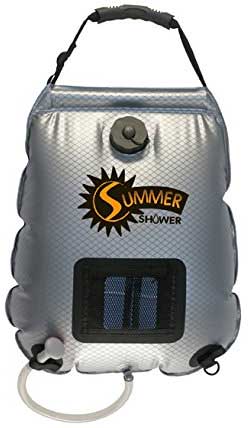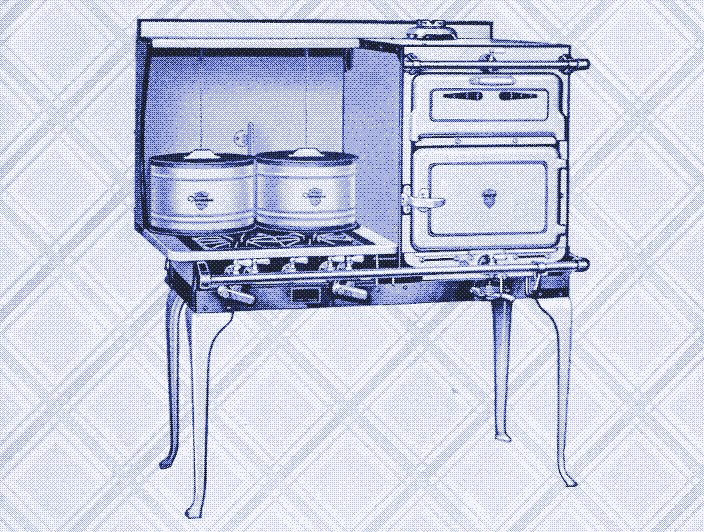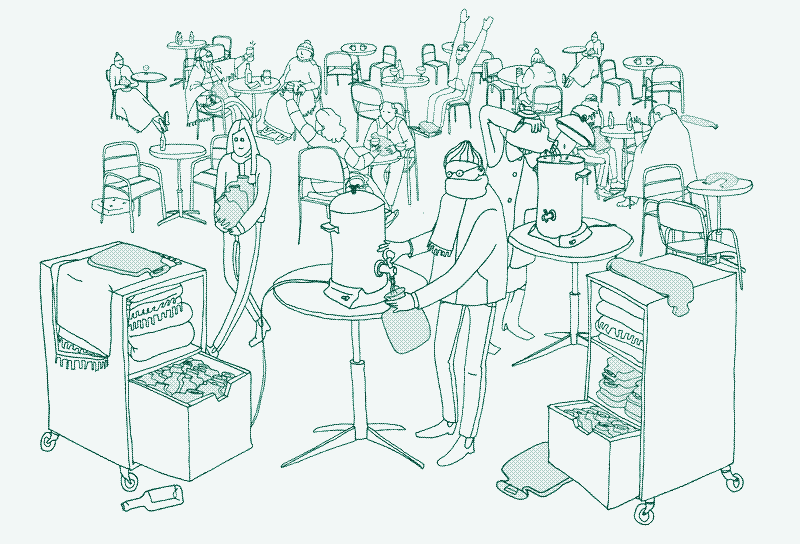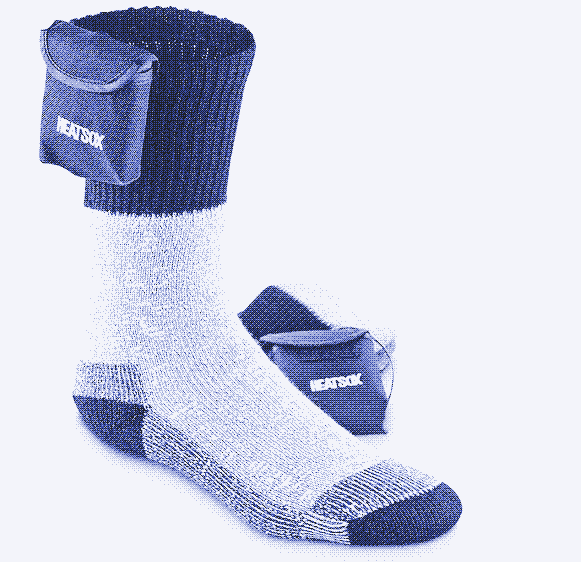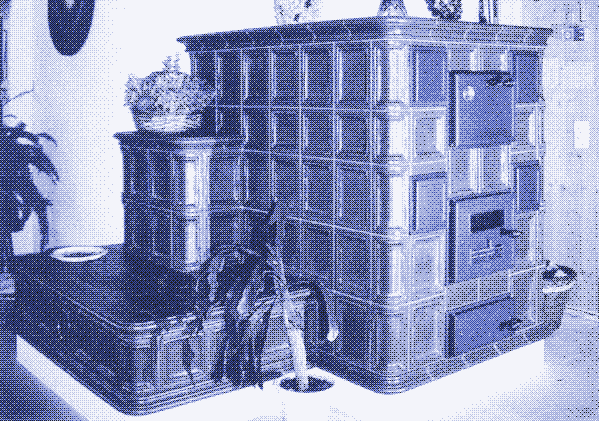I want to summarize some of the things one can do with Solar Panels nowadays, and what to look out for, for those interested. But first off, I would like to emphasize and recommend having a reliable backup system (first and foremost) based around electricity/heat generation through fossil fuels (Gas, Petrol, Diesel etc.) or wood/coal. In this thread, you can read some of the basic ideas behind backup systems of that kind.
I personally have set up a system now that is pretty unique and is based around the idea of tracking the sun (or more correctly, photons) with a one of a kind tracking system by an inventor as the centerpiece of the system. The tracker is based around the idea of detecting the most energy dense point in the sky dome (where most photons are coming through). Interestingly and surprisingly for me at first was this: Especially in the early morning and late evening hours and during cloudy days, that point in the sky is often not where the sun actually is! Sounds counterintuitive, but it is true! After thinking about it and asking the inventor, he confirmed my initial guess on why that is, after I observed it myself; The inventor of the tracker explained it in that way to me:
I have designed my system around maximizing the amount of energy in bad weather and/or when it is situated at a less than optimal position (shading, not much direct sun coverage etc). My preliminary/rough calculations now show that the system actually produces between 10 to 40 times (1000 - 4000%) more energy during bad weather then a similar sized normal/standard solar panel positioned stationary southward (in the western hemisphere)! It also works most efficiently during cold winter days with snow on the ground, since it also capitalizes on the Albedo effect. That is because I have chosen to work with bifacial solar panels. I have also designed the system to be as light and portable as possible. Everything can be set up and disassembled quickly into a small space. That system comes as close as you can get to "free energy" in my book. I can generate/operate pretty much any electrical device up to around 2100 Watt and can even heat pretty efficiently (both water and air). Which is pretty much unheard of for such a small system that only nominally consists of two 220W bifacial Panels. Practically speaking, I can heat and produce/use lots of energy for free without the need of any conventional fossil fuels or wood, while having maximized the energy coming through in bad weather significantly. "Free" energy!
There is quite a lot more to the system and how I set it up and constructed it. But I won't (and can't at this point) go into any further details about it, instead I would like to share some of my experiences on what to look out for if you want to try to use solar energy:
- I personally have decided to use bifacial solar panels. As far as I know, generally speaking, they have only one downside compared to standard panels, which is: They are MUCH more expensive, but still affordable. I personally never shy away from investing more into quality products. In fact, I think it most often pays out in the long run, not only in terms of money. Other than that, they have only plus points compared to traditional/standard panels in my book: 1: They are much thinner and less heavy, 2: if positioned optimally, they produce quite a lot more energy compared to standard panels of the same size, especially in bad/low light conditions, 3: Their life span is similar if not better compared to standard panels, 4: They work especially well/efficient in cold and snowy conditions since they harvest the Albedo effect. [Edit 29.11.2023. Added the following two points=] 5: Bifacial panels handle snowloads better. Especially if positioned at an angle and you have a good Albedo effect (via snow on the ground or similarly diffuse white grounds) those panels tend to melt the snow on the panel much more pronounced even in very cold weather. Which means that they tend to clear/melt the snow away above the cells quite effectively in contrast to standard panels. 6: A good positioned bifacial panel can continue producing electricity (although much reduced) when the top is covered with snow because of the bifacial feature.
- While I have personally decided to work with bifacial panels, in most cases, especially if you want to set up a bigger system, standard panels are much more economical in terms of costs for purchase. So I would go for standard panels if you need lots of them.
- You can also try to work with solar water heating systems, which are primarily designed for heating water and not for producing electricity. But I have personally decided against that since I can heat, although on a limited basis (water and air) with my small system via electricity. Also, setting up such a solar water heating system can be very cumbersome, and depending on where you life, the government can have lots of rules and regulations that you need to abide by. Also, from the little I heard, depending on the brand, they can easily be destroyed by hail. But don't quote me on that!
- Whatever you want to do, be it Solar water heating or standard solar panels (electricity) there are numerous companies who can do all the heavy lifting for you, for a price though.
- I personally decided to go for a tracking system. There are quite a limited number of those out there, but the one I went for is by far the best IMO in every way. Just mechanically speaking, all the others that I could find are much more vulnerable and much less stable/durable.
- Especially if you have enough area to put up lots of panels, I would recommend not to use a tracking system, nor bifacial panels (mainly because of the price). Unless, of course, you have a lot of spare money at your disposal.
- Be warned, no matter if you go with standard solar panels or bifacial ones, there are a number of things you need to be aware of. 1: There are quite a number of different types of solar cells, 2: You need to look out for the efficiency of a panel. Very generally speaking, the higher the efficiency the more energy it can produce UNDER BEST CONDITIONS (the best commercial/affordable ones right now are around 24 % efficiency), 3: and most importantly of all in my book, no matter how good the efficiency of a panel is formally rated, it can, (AS MOST DO!), perform VERY poorly in cloudy/shady conditions!!! From what I could gather, the reason for that is mostly how exactly the solar-cells are wired inside the panels (parallel and/or series types of wiring seem to be the key here). The way the cells of one panel are wired together within (and how several panels in turn are connected to each other, on the other hand) can have a huge impact on what amount of energy you are getting when the panel/-s are confronted with cloudy weather and/or shading. Most standard panels for houses perform very poorly in cloudy/shady conditions because of that! Because of that, it is quite common that many Panels/Systems produce almost no electricity at all (even in best weather!) when, for example, just a tiny part of the array is shaded! A small leaf can do that! To better illustrate that point, watch this video:
or the following video, where you can see differently wired solar panels and what effect shading can have on energy output, depening on the wiring of the panel:
So what this means is, that you need to look for Panel-s that have a good shading behavior. If you don't do that, you will produce almost no electricity at all in best weather/sun conditions if any part of the system is shaded, even just minimally, and/or when the weather is cloudy/bad! Which is very bad, indeed! But there are Panels/Companies out there who wire their panels in a way to avoid just that. Which makes a huge difference! Sometimes the only way to be sure if your Panel/System has a good shading behavior is to either ask/write to the manufacturer itself and/or try to find independent tests on youtube and/or magazines where you can see the shading behavior yourself. The latter part is what I did to find the right bifacial panel for my needs.
- No matter if you use a bifacial, standard or solar water heating panel/system (and you are not using a tracker) it is best to have them permanently fixed facing a specific area in the sky (in the norther hemisphere, that is most often done facing south) and at a specific angle. But depending on your location and how much free sun coverage you get THROUGHOUT the year and what you PRIORITIZE, that direction can differ! You need to find that out by observing the course of sun throughout the year at the place where you want to set it up (which I did) and/or try tools that simulate that (via Apps, for example) or companies that can do that for you. Tip: Observing the course of the sun on summer and winter solstice respectively shows you the shortest and longest pathway of the sun in each year. I would personally prioritize to get as much energy as possible in winter, since at the northern latitude I'm situated in, the amount of daylight and/or sun coverage is much reduced in winter, while in summer you naturally get plenty more. And also, of course, because in terms of an emergency, in winter you are much more likely to need the power.
- Generally, speaking, Solar Panels work more efficiently in cold weather
- If you want to set up a bigger system and have kept in mind the points above, what is called "over paneling" in the solar business can come in very handy, most especially during bad weather. On the most basic level, what it means is that you put up more panels than you need, which then can produce more power in bad weather conditions.
- No matter which type of Solar system you look for, make sure that the cells have at least some basic protection against bending and things like hail. A weather/hail proofed Glass coverage, that is either, between, or better, over the cells, is a standard consideration on that front.
- [Edit 29.11.2023. Added the following=] Be aware of snowloads on solar panels in the winter. When there is snow cover on standard solar panels they pretty much stop to function. Bifacial panels handle snowloads better. Especially if positioned at an angle and you have a good Albedo effect (via Snow on the ground or similarly diffuse white grounds), those panels tend to melt the snow on the panel much more pronounced even in very cold weather. Which means that they tend to clear/melt the snow away by themselves above the cells quite effectively in contrast to standard panels. The handling of snowloads is even better when you have a tracking system equipped with bifacial panels. A good positioned bifacial panel can continue producing electricity (although much reduced) when the top is covered with snow because of the bifacial feature.
Edit; 29.11.2023= Added additional information
I personally have set up a system now that is pretty unique and is based around the idea of tracking the sun (or more correctly, photons) with a one of a kind tracking system by an inventor as the centerpiece of the system. The tracker is based around the idea of detecting the most energy dense point in the sky dome (where most photons are coming through). Interestingly and surprisingly for me at first was this: Especially in the early morning and late evening hours and during cloudy days, that point in the sky is often not where the sun actually is! Sounds counterintuitive, but it is true! After thinking about it and asking the inventor, he confirmed my initial guess on why that is, after I observed it myself; The inventor of the tracker explained it in that way to me:
The evening sky with the sun appears bright, but at the horizon the light has to travel through at least 400 miles through the atmosphere, bugs, particulates, etc so it is not as bright as one might think. (99% of the atmosphere directly above you is only about 30 miles thick with only only a few miles of particulates.) And at the same time of day the foreground is fairly dark, not much diffuse light to brighten it up. It is actually a bit of an optical illusion.
I have designed my system around maximizing the amount of energy in bad weather and/or when it is situated at a less than optimal position (shading, not much direct sun coverage etc). My preliminary/rough calculations now show that the system actually produces between 10 to 40 times (1000 - 4000%) more energy during bad weather then a similar sized normal/standard solar panel positioned stationary southward (in the western hemisphere)! It also works most efficiently during cold winter days with snow on the ground, since it also capitalizes on the Albedo effect. That is because I have chosen to work with bifacial solar panels. I have also designed the system to be as light and portable as possible. Everything can be set up and disassembled quickly into a small space. That system comes as close as you can get to "free energy" in my book. I can generate/operate pretty much any electrical device up to around 2100 Watt and can even heat pretty efficiently (both water and air). Which is pretty much unheard of for such a small system that only nominally consists of two 220W bifacial Panels. Practically speaking, I can heat and produce/use lots of energy for free without the need of any conventional fossil fuels or wood, while having maximized the energy coming through in bad weather significantly. "Free" energy!
There is quite a lot more to the system and how I set it up and constructed it. But I won't (and can't at this point) go into any further details about it, instead I would like to share some of my experiences on what to look out for if you want to try to use solar energy:
- I personally have decided to use bifacial solar panels. As far as I know, generally speaking, they have only one downside compared to standard panels, which is: They are MUCH more expensive, but still affordable. I personally never shy away from investing more into quality products. In fact, I think it most often pays out in the long run, not only in terms of money. Other than that, they have only plus points compared to traditional/standard panels in my book: 1: They are much thinner and less heavy, 2: if positioned optimally, they produce quite a lot more energy compared to standard panels of the same size, especially in bad/low light conditions, 3: Their life span is similar if not better compared to standard panels, 4: They work especially well/efficient in cold and snowy conditions since they harvest the Albedo effect. [Edit 29.11.2023. Added the following two points=] 5: Bifacial panels handle snowloads better. Especially if positioned at an angle and you have a good Albedo effect (via snow on the ground or similarly diffuse white grounds) those panels tend to melt the snow on the panel much more pronounced even in very cold weather. Which means that they tend to clear/melt the snow away above the cells quite effectively in contrast to standard panels. 6: A good positioned bifacial panel can continue producing electricity (although much reduced) when the top is covered with snow because of the bifacial feature.
- While I have personally decided to work with bifacial panels, in most cases, especially if you want to set up a bigger system, standard panels are much more economical in terms of costs for purchase. So I would go for standard panels if you need lots of them.
- You can also try to work with solar water heating systems, which are primarily designed for heating water and not for producing electricity. But I have personally decided against that since I can heat, although on a limited basis (water and air) with my small system via electricity. Also, setting up such a solar water heating system can be very cumbersome, and depending on where you life, the government can have lots of rules and regulations that you need to abide by. Also, from the little I heard, depending on the brand, they can easily be destroyed by hail. But don't quote me on that!
- Whatever you want to do, be it Solar water heating or standard solar panels (electricity) there are numerous companies who can do all the heavy lifting for you, for a price though.
- I personally decided to go for a tracking system. There are quite a limited number of those out there, but the one I went for is by far the best IMO in every way. Just mechanically speaking, all the others that I could find are much more vulnerable and much less stable/durable.
- Especially if you have enough area to put up lots of panels, I would recommend not to use a tracking system, nor bifacial panels (mainly because of the price). Unless, of course, you have a lot of spare money at your disposal.
- Be warned, no matter if you go with standard solar panels or bifacial ones, there are a number of things you need to be aware of. 1: There are quite a number of different types of solar cells, 2: You need to look out for the efficiency of a panel. Very generally speaking, the higher the efficiency the more energy it can produce UNDER BEST CONDITIONS (the best commercial/affordable ones right now are around 24 % efficiency), 3: and most importantly of all in my book, no matter how good the efficiency of a panel is formally rated, it can, (AS MOST DO!), perform VERY poorly in cloudy/shady conditions!!! From what I could gather, the reason for that is mostly how exactly the solar-cells are wired inside the panels (parallel and/or series types of wiring seem to be the key here). The way the cells of one panel are wired together within (and how several panels in turn are connected to each other, on the other hand) can have a huge impact on what amount of energy you are getting when the panel/-s are confronted with cloudy weather and/or shading. Most standard panels for houses perform very poorly in cloudy/shady conditions because of that! Because of that, it is quite common that many Panels/Systems produce almost no electricity at all (even in best weather!) when, for example, just a tiny part of the array is shaded! A small leaf can do that! To better illustrate that point, watch this video:
or the following video, where you can see differently wired solar panels and what effect shading can have on energy output, depening on the wiring of the panel:
So what this means is, that you need to look for Panel-s that have a good shading behavior. If you don't do that, you will produce almost no electricity at all in best weather/sun conditions if any part of the system is shaded, even just minimally, and/or when the weather is cloudy/bad! Which is very bad, indeed! But there are Panels/Companies out there who wire their panels in a way to avoid just that. Which makes a huge difference! Sometimes the only way to be sure if your Panel/System has a good shading behavior is to either ask/write to the manufacturer itself and/or try to find independent tests on youtube and/or magazines where you can see the shading behavior yourself. The latter part is what I did to find the right bifacial panel for my needs.
- No matter if you use a bifacial, standard or solar water heating panel/system (and you are not using a tracker) it is best to have them permanently fixed facing a specific area in the sky (in the norther hemisphere, that is most often done facing south) and at a specific angle. But depending on your location and how much free sun coverage you get THROUGHOUT the year and what you PRIORITIZE, that direction can differ! You need to find that out by observing the course of sun throughout the year at the place where you want to set it up (which I did) and/or try tools that simulate that (via Apps, for example) or companies that can do that for you. Tip: Observing the course of the sun on summer and winter solstice respectively shows you the shortest and longest pathway of the sun in each year. I would personally prioritize to get as much energy as possible in winter, since at the northern latitude I'm situated in, the amount of daylight and/or sun coverage is much reduced in winter, while in summer you naturally get plenty more. And also, of course, because in terms of an emergency, in winter you are much more likely to need the power.
- Generally, speaking, Solar Panels work more efficiently in cold weather
- If you want to set up a bigger system and have kept in mind the points above, what is called "over paneling" in the solar business can come in very handy, most especially during bad weather. On the most basic level, what it means is that you put up more panels than you need, which then can produce more power in bad weather conditions.
- No matter which type of Solar system you look for, make sure that the cells have at least some basic protection against bending and things like hail. A weather/hail proofed Glass coverage, that is either, between, or better, over the cells, is a standard consideration on that front.
- [Edit 29.11.2023. Added the following=] Be aware of snowloads on solar panels in the winter. When there is snow cover on standard solar panels they pretty much stop to function. Bifacial panels handle snowloads better. Especially if positioned at an angle and you have a good Albedo effect (via Snow on the ground or similarly diffuse white grounds), those panels tend to melt the snow on the panel much more pronounced even in very cold weather. Which means that they tend to clear/melt the snow away by themselves above the cells quite effectively in contrast to standard panels. The handling of snowloads is even better when you have a tracking system equipped with bifacial panels. A good positioned bifacial panel can continue producing electricity (although much reduced) when the top is covered with snow because of the bifacial feature.
Edit; 29.11.2023= Added additional information
Last edited:

